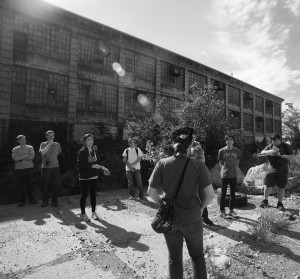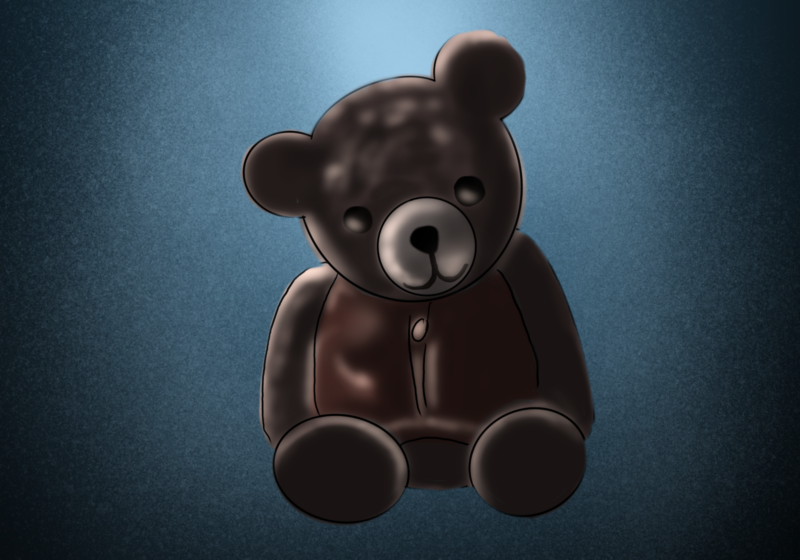 Wedged between Orchard and Lyell Avenues, just northwest of downtown Rochester, are the remnants of a once thriving industrial park. A chain-link fence encloses the property as if to contain the gloom within. Amid the ruins, a dozen or so students have gathered around a hole in the wall of a crumbling brick building. As they clamber inside, a voice resounds from the darkness: “Watch your step! Avoid places where plants are growing! Stay out of the elevators!” It belongs to senior Inga Koch, who is guiding the trip, courtesy of UR’s Urban Exploring club.
Wedged between Orchard and Lyell Avenues, just northwest of downtown Rochester, are the remnants of a once thriving industrial park. A chain-link fence encloses the property as if to contain the gloom within. Amid the ruins, a dozen or so students have gathered around a hole in the wall of a crumbling brick building. As they clamber inside, a voice resounds from the darkness: “Watch your step! Avoid places where plants are growing! Stay out of the elevators!” It belongs to senior Inga Koch, who is guiding the trip, courtesy of UR’s Urban Exploring club.
Urban exploring, or urbex for short, is the exploration of abandoned man-made structures. They vary in size and function and can include warehouses, offices, hospitals, and private residential homes.
UR students founded the club in 2006, but urbex as an activity has a much wider historic context. Considered the father of urbex, Philibert Aspairt ventured into the underground quarries of Paris in 1793. His body was found 11 years later. Today, urban explorers travel all over the world to study a range of structures. Interest in the activity has exploded over the last decade due to increased media coverage.
For junior and club president Jeremy Warner, it was curiosity that led him to join his freshman year.
“I wanted to try something new when I came to college,” Warner said, explaining that his electrical and computer engineering major piqued his interest about this particular trip.
That’s because at one time, these walls were home to Sykes Datatronics, a computer manufacturer that filed for bankruptcy in the late ’80s. By 1992, the building had fallen into complete disuse. Fire has since consumed much of what remained of the interior, leaving only heaps of charred paper and twisted metal. Exposure to the elements has warped the floorboards, stretching across the floor like waves.
“What happened here is actually a close relative of continental drift,” Bill Finan ’11 said.
Finan, who has been a member of Urban Exploring since its inception, has explored almost 200 sites. Stepping over several fallen girders, Finan helps Koch lead the group into the basement. Broken CRT monitors and modems line the walls collecting dust. Nearby is a disemboweled file cabinet.
“Look what I found,” Warner says, holding up an antiquated RAM chip. “It’s like a technological trophy.”
According to Warner, there is an unspoken rule among urban explorers: If there is one of something, don’t take it.
“You’re not going to these places to destroy them,” he said. “You’re going to evaluate them.”
Most noticeable is the utter emptiness. The upper levels are mostly bare, albeit some insulation that has been pulled from the walls and shards of glass strewn across the floor. And — a spot of green.
“We either see stuff that nature has touched or stuff humans have touched, but urbex is a unique niche,” Warner said. “Humans have abandoned, and now nature is taking over.”
The fourth floor is a seemingly perfect example. Covering the floorboards and drywall is a thick carpet of bright green moss and thousands of tiny, brown mushrooms. An outside breeze enters this mini ecosystem, gently carrying with it a few pine seedlings. Somewhere outside, a dog barks over the hum of traffic. In a way, the atmosphere is peaceful, meditative even.
“Those who explore regularly know that it creates a whole new awareness of the environment around us,” Finan said. “The societal norm of ‘don’t go there’ is reversed to ‘come right in.’ Forbidden places are opened, and it’s a way to connect with the city itself, apart from its people, and experience it on another level.”
Interestingly, what draws some to urbex chases others away. To some, it seems too dangerou or criminal. Warner attributes this and the fact that trips can sometimes be time-consuming to the group’s modest membership. Still, he maintains that his experience with the club has been a worthwhile one.
“It’s definitely changed my life positively, broadened my perspective,” he said.
Only this past year, Warner helped reinstate a Wilson Day tradition — the Goose Hunt. With a handful of UR Foot members, he organized a scavenger hunt that sent freshmen across Rochester to experience the city firsthand. Events like this and simple word of mouth go a long way in boosting membership, Warner said. In fact, both Finan and junior Johnson Truong discovered Urban Exploring this way.
According to Truong, he received an invitation from Warner and agreed to go as “a way to hang out with friends.”
Members of UR’s Urban Exploring club encourage anyone, experienced or not, to come out for a trip. The activity is certainly one that provides a sense of both aesthetic and historic gratification. It’s not just about finding beauty in these old buildings, it’s also about taking part of something that once was.
“Maybe the first few times seemed gross or scary, but you get over that part pretty fast,” Finan said. “The more of it you do, you start to find it to be inspiring.”
Arre is a member of the class of 2015.





